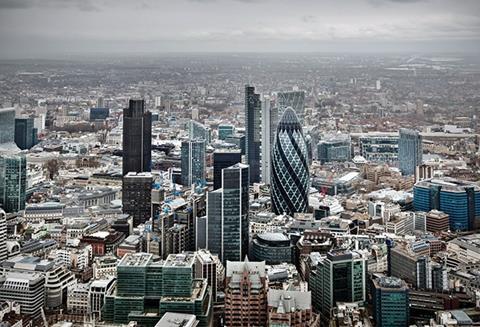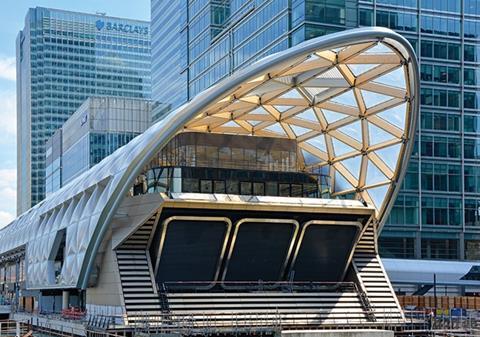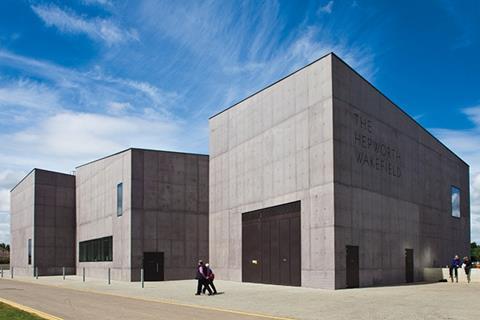Ike Ijeh assesses the impact the coalition has had on architecture and how design has fared through the years of budget tightening

Back in 1941 when the US government was building its War Department headquarters, President Roosevelt - a keen amateur architect who had previously been responsible for the retention of the Pentagon’s radical five-sided design - proposed that the new building could utilise new air-conditioning technology to remove all courtyards, lightwells and windows.
Luckily Roosevelt was overruled. But the incident does anecdotally illustrate the impact those in power can have on the built environment. The year 2010, like 1941, was a time of austerity and when the coalition government was elected, few predicted an architectural renaissance. The fact that one hasn’t really materialised is not surprising, but how then can we assess the impact of the coalition on architecture over the past five years?
Of course, government is just one of myriad factors that have an impact on the built environment. Consider London, where much of the historic development of the city was spearheaded by the private sector rather than the state. Nonetheless, the records of recent Labour and Conservative governments in particular, with their bounty of PFI hospitals, BSF schools and millennium projects, clearly demonstrate the influence that politics can have on architecture.
We can draw few overall political consistencies from the coalition’s involvement in the built environment over the past five years. In some areas such as HS2 and Part L revisions, the government has proved to be avowedly centralist and interventionist. In others, such as planning and council housing reforms, they have displayed opposite sympathies.
There’s one area where the coalition can point to success: employment among architects. In 2009, according to RIBA, 30% of architects were out of work. But by 2015, architectural unemployment had fallen to its lowest level since 2008. Too late for the many architecture practices that went to the wall as a consequence of the global financial crisis, but a cause for optimism to be sure and proof, the government would argue, that an improving economy is the best friend architecture has.
So here, on the eve of the election, we assess the coalition’s architectural impact.
Housing

While London’s housing market is booming, little of it has anything to do with the government. In fact, an orgy of unfettered capitalism from which the state has been conspicuously absent has enabled London to exploit its global hub status to attract massive levels of foreign investment. This in turn helped keep development activity within the capital’s housing market high throughout the downturn and beyond.
However, the nature of London’s housing boom is highly controversial. While all cities thrive on investment, the nature of London’s has been slated as discriminatory and divisive, with foreign investors inflating house prices to a level which average Londoners cannot afford. This, coupled with a critical shortage of affordable housing stock, has created the ingredients for today’s housing crisis, a crisis which finds an ironic visual metaphor in the glut of luxury and largely vacant residential high-rises that have pockmarked the capital’s skyline during the coalition’s tenure.
In London, housing is one of the few strategic areas central government has devolved locally, in this case to the mayor of London’s office. But all those seeking regional devolution elsewhere should take note that the mayor has definitely not solved London’s housing problems. Nonetheless, while Boris Johnson seems unable to affect quantity (at least when it comes to affordable housing), he has had a marked impact on quality. Space and design standards set out in the London Plan have been credited with creating a housing renaissance in the capital marked by several instances of exceptional contemporary design, albeit amid swathes of conventional mediocrity.
While there are also examples of this level of quality across the country, London’s housing shortage is reflected nationally and the government has failed to spark the levels of house building required to meet rising demand. It is widely accepted that Britain needs to build around 240,000 houses a year, yet in 2014, despite housing construction increasing by 8% on the previous year, just 118,760 were built.
That said, for some, such as Steve Turner of developer lobbyist the Home Builders Federation, the sum of the coalition’s impact on housing has been largely positive. “Yes, there’s clearly some way to go but we need to put things into context. Five years ago we were stuck in the biggest recession for a generation. Also, the government introduced two key legislative measures that have significantly helped increase housing supply, Right To Buy and changes to the planning system.”
One final housing commodity might also have been an unlikely beneficiary of coalition intervention: council housing. In 2013 the Treasury amended the tortuously convoluted funding restrictions imposed by central government on local authorities to enable them to keep rental income from their council houses, (known as the Housing Revenue Account) and use it to finance new council housing. If, as is increasingly in evidence across the country, this leads to the first surge in council house building in over three decades, the coalition’s impact on housing could well prove to be on an historic scale.
But Turner believes the government could still have done more. “The planning process is still too long and vulnerable to delays; the time it takes from planning to actually getting builders on site still needs to be sped up.”
Schools

Few political acts illustrate the ideological gulf between the coalition government and its Labour predecessors as powerfully as the scrapping of the BSF programme (Building Schools for the Future) and its eventual replacement with PSBP (Priority Schools Building Programme). While the former created a string of lavishly funded and tortuously procured school buildings and was variously heralded as either profligate or progressive, the latter imposes rigorous adherence to a baseline template to grind out schools that are either hailed as bastions of efficiency or derided as monolithic prefabs.
PSBP is the coalition’s flagship schools building programme and builds on the recommendations of the landmark 2011 James Review, which called for the adoption of standardisation principles to streamline school design and reduce costs. So what has been its impact and how has the coalition’s wider school building policy affected schools’ design?
For Caroline Buckingham, director of architect HLM, the emphasis on uniformity was ill-judged. “The focus was on creating prototype schools, which is misguided when dealing with such a wide mix of educational provision. It became pretty obvious that one size wasn’t going to fit all.” Buckingham also believes that this repetitious approach concealed logistical inadequacies and scepticism about the role design plays in education. “We spent time trying to understand briefs which hadn’t been developed, the education bodies were draconian, outspoken in their belief that architecture and space don’t make a difference to the learning experience, and that money should be spent on the front line.”
But despite inherent complexities, Buckingham has found opportunities for innovation under the coalition’s tenure, particularly in higher education. “The interpretation of briefs, mixed development opportunities, engagement with disparate bodies and plethora of procurement methods are complex but on the upside it provides us with the opportunity to really innovate and rise to the challenge and, excitingly, there’s a new boost in estate spending by the universities, which finally recognises the importance of the student experience.”
Infrastructure

Two big infrastructure projects have defined the coalition’s administration: Crossrail and HS2. Both have had a chequered design backstory which is indicative of the inconsistency of wider coalition attitudes towards the role of architecture within infrastructure.
There were howls of protest when design review panels for the 27 surface Crossrail stations were axed in 2013. Prominent architects including Richard Rogers, Will Alsop and David Marks lined up to criticise the move and claim that government cuts had jeopardised the country’s proud railway heritage and ensured that Crossrail would fail to match the architectural spectacle created by London’s last big rail infrastructure undertaking, the Jubilee Line Extension. Under pressure, Crossrail reversed the decision the following year.
Another infrastructure design-related government u-turn occurred on the notoriously unpopular Euston Station. Plans to demolish and rebuild the station were first tabled in the 2000s and were given an enthusiastic boost by the chancellor who resolved to incorporate the redevelopment into its planned role as an HS2 terminus. Plans were then controversially scuppered when HS2 resolved to only refurbish and expand the existing station in cost-cutting measure. However, while HS2’s Euston intervention typifies the kind of controversy the rail link has provoked, it looks set to try to avoid
the design review problems that beset Crossrail. An HS2 design panel has been established to scrutinise the design of planned stations and related infrastructure.
Sustainable design

Lynne Sullivan, founder of architect sustainableBYdesign, neatly sums up the coalition’s impact on the sustainability agenda: “The large print giveth but the small print taketh away.” Essentially, Sullivan maintains that the government headline approach was largely positive, but that it was inevitably diluted by a failure to back it up with detail. She cites carbon reduction targets as one of several examples of these contradictions.
“Carbon reduction targets are obviously a good thing. But then on the other hand we see Display Energy Certificates being scrapped, a perverse move which removes a powerful branch of knowledge from the consumer. How are we going to achieve the 2016 zero carbon target when commitment is always watered down with small site concessions? Delivering zero carbon by next year is going to be a huge challenge for whoever wins the election.”
And what of the coalition’s flagship sustainability policy, the Green Deal? Again Sullivan claims it is compromised by inconsistency. “The Green Deal is good but the watering down of the eco consultation means it has lost a huge amount of momentum.”
Generally Sullivan wishes that coalition environmental policy had been “less about percentages and more about meeting specific targets.” She concedes that this would have required the government to instigate “major changes to compliance methodology” and adopt “more joined-up thinking and openness between government departments.”
Culture

When the Arts Council suffered a savage 30% cut in funding during the coalition’s landmark Spending Review in October 2010, for many this symbolised the end of an era of unprecedented cultural largesse that had spawned projects as richly diverse as the Tate Modern, Imperial War Museum North and the Olympic Games. Five years on, what has the impact of these cuts been on the nation’s cultural landscape?
Of course cultural projects have endured but in a far more straitened form. Major national projects such as the extension of the British Museum and the renovation of Tate Britain have been completed, as have other big cultural schemes such as Liverpool Museum, the Ashmolean extension, Riverside Museum Glasgow, new galleries in Margate and Wakefield and new central libraries in Liverpool, Manchester and Birmingham. But funding for these projects was secured long before the last election. Equally, the 2012 Olympic Games marked a generational cultural high-point but again the coalition merely sustained previous arrangements.
So what important new arts projects have actually been commissioned under coalition’s watch? They may lack the numbers and glamour of yesteryear but there have been some. Major extensions are planned to Northampton and Auckland Castle museums and the Mecanoo-designed HOME cultural centre opens this month in Manchester, as does London’s hotly anticipated Damien Hirst Gallery. Moreover, without any active coalition involvement, London remains a preeminent international cultural hub, a status set to be further enhanced by the chancellor’s recent endorsement of a new national concert hall for the City.



























No comments yet